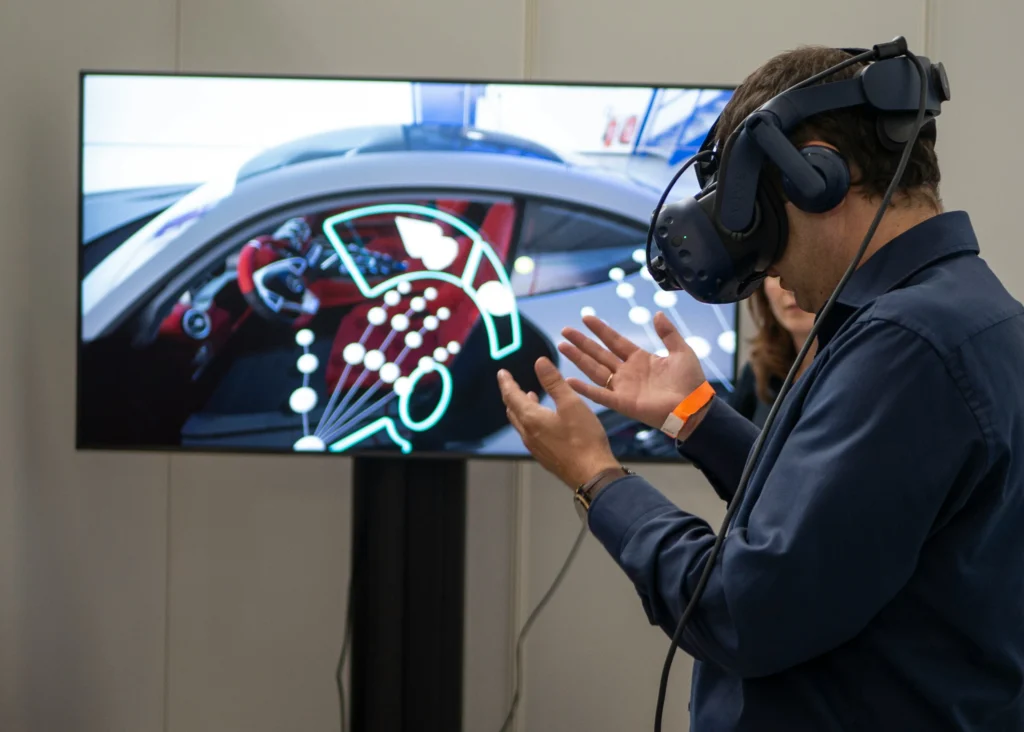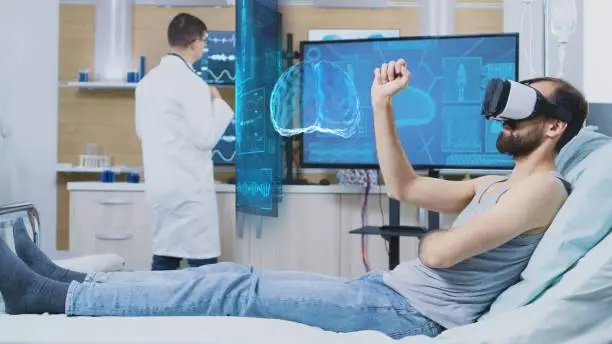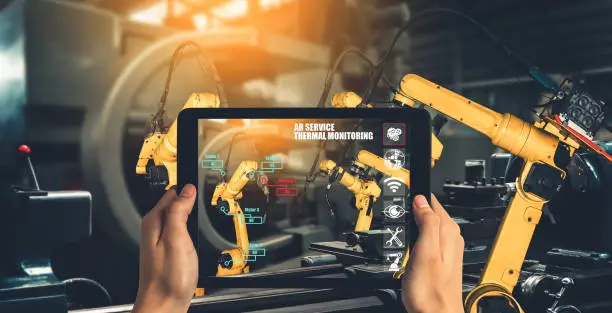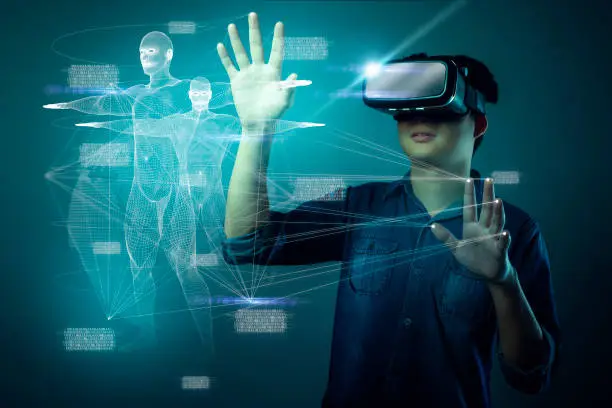Introduction
Augmented Reality (AR) stands at the forefront of technological innovation, bridging the gap between the digital and physical worlds in ways previously unimaginable. Defined by its ability to overlay digital information onto real-world environments, AR has swiftly evolved from a niche concept to a transformative force across industries. This blog explores the fundamental aspects of Augmented Reality, its practical applications in various sectors, and its promising future in shaping how we perceive and interact with our surroundings.
Understanding Augmented Reality

Definition of Augmented Reality
- Augmented Reality (AR) Technology: AR is a technology that overlay digital content such as images, videos, typically through the use of devices like smartphones, AR glasses.
- Components of AR: AR systems typically include a camera, sensors, and a display device to project digital information onto the physical environment.
Evolution of Augmented Reality
- Historical Background: The concept of AR dates back to the 1960s, with early experiments in computer graphics.
- Modern Developments: The advent of smartphones and wearable technology has propelled AR into mainstream use.
Applications of Augmented Reality

Augmented Reality in Entertainment
- Gaming: AR has revolutionized the gaming industry, with popular games like Pokémon Go leading the charge.
- Movies and Television: AR enhances the viewing experience by providing interactive and immersive content.
Augmented Reality in Education
- Interactive Learning: AR applications in education make learning more engaging and interactive for students.
- Virtual Classrooms: AR enables the creation of virtual classrooms, allowing students to explore subjects in a more hands-on manner.
Augmented Reality in Healthcare

Medical Training and Education
- Simulated Surgeries: AR provides medical professionals with realistic simulations for training purposes.
- Anatomy Learning: AR applications help medical students visualize and interact with 3D models of human anatomy.
Patient Care
- Diagnosis and Treatment: AR assists doctors in diagnosing conditions and planning treatments with enhanced precision.
- Therapeutic Applications: AR is used in therapies for conditions such as phobias and post-traumatic stress disorder (PTSD).
Augmented Reality in Retail

Enhancing Shopping Experiences
- Virtual Try-Ons: AR allows customers to virtually try on clothes, accessories, and makeup before making a purchase.
- Product Visualization: Customers can see how furniture and other products will look in their homes using AR apps.
Improving Customer Engagement
- Interactive Displays: AR-powered displays provide customers with interactive and personalized shopping experiences.
- Enhanced Advertising: AR advertisements create immersive and engaging marketing campaigns.
Augmented Reality in Manufacturing

Streamlining Operations
- Assembly and Maintenance: AR guides workers through complex assembly and maintenance processes with real-time instructions.
- Quality Control: AR applications help in detecting defects and ensuring high-quality production standards.
- Data Analysis: AR systems can collect and analyze data from the production process, identifying patterns and bottlenecks.
Training and Safety
- Worker Training: AR provides on-the-job training for workers, improving skill acquisition and retention.
- Safety Enhancements: AR offers safety overlays, highlighting potential hazards in the workplace.
The Future of Augmented Reality

Technological Advancements
- Improved Hardware: Advances in AR hardware, such as lighter and more powerful headsets, will enhance user experiences.
- Software Innovations: Continued development of AR software will lead to more sophisticated and versatile applications.
- Smart Cities and Infrastructure: AR will play a crucial role in the development of smart cities, infrastructure management, and public services.
Broader Adoption
- Industry Integration: As AR technology becomes more accessible, its adoption across various industries will increase.
- Consumer Applications: The growth of AR in consumer markets will lead to new and exciting applications in daily life.
Conclusion
Augmented Reality is a transformative technology with the potential to revolutionize numerous aspects of our lives. From entertainment and education to healthcare and retail, AR is enhancing how we perceive and interact with the world. As technology continues to evolve, the applications of AR will expand, bringing about even more innovative and impactful changes.
